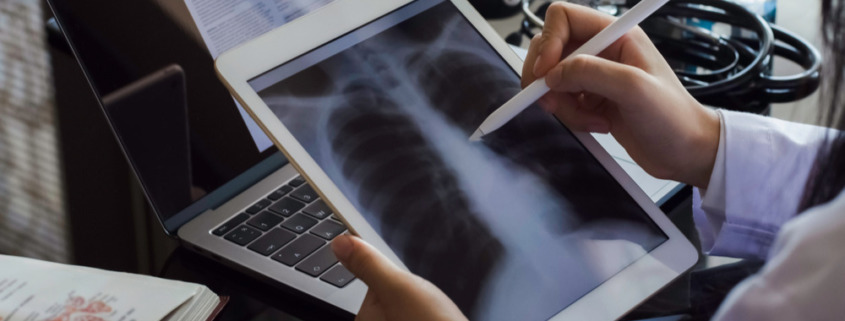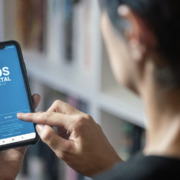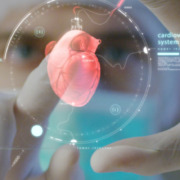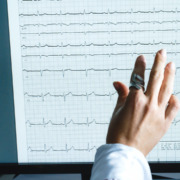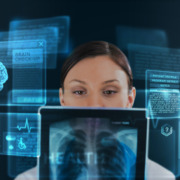What is Telemedicine and how does it work?
Last Updated on 1 de February de 2023 by Vinicius
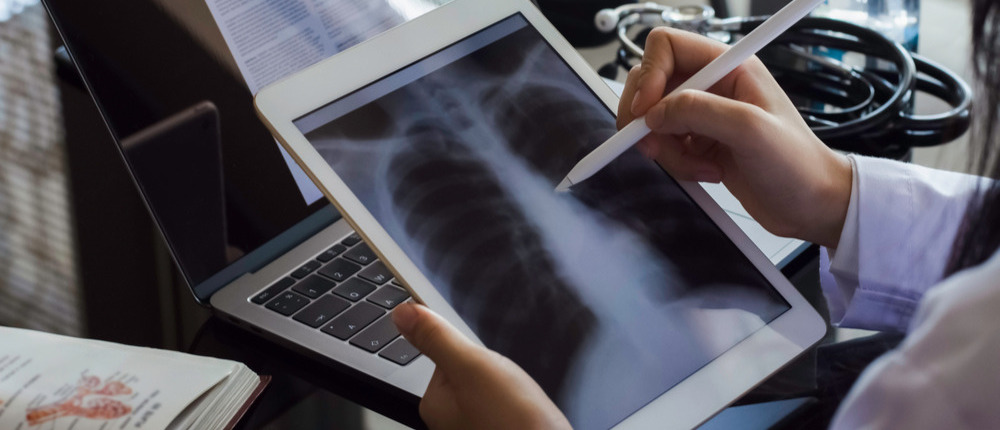
Telemedicine is an advanced process for monitoring patients, exchanging medical information and analyzing results of different exams. These medical exams are evaluated and delivered digitally, giving support to traditional medicine. Telemedicine is already used all over the world, in a safe and legalized way, being in accordance with the medical legislation and standards. The practice became more popular during the Covid-19 pandemic, when the Brazilian government also released teleconsultations.
With the use of Information Technologies, which add quality and speed to the exchange of knowledge, doctors can make decisions with greater agility and accuracy. Through telemedicine, specialists can access the exams from anywhere in the country, using computers and mobile devices such as smartphones and tablets connected to the internet.
In this article, we will talk more about this technology, its operation, the advantages, applications and how it can help Medicine in a more accurate and humanized medical care.
What is Telemedicine?
The term telemedicine originates from the Greek word ‘tele’, which means distance. It is also used to form the words telephone, television, etc. Thus, telemedicine covers all medical practice performed remotely, regardless of the instrument used in the exercise. The practice originates in Israel and is widely applied in the United States, Canada and European Countries.
Since its inception in the 1950s, telemedicine has changed and advance a lot. Previously, few hospitals used televisions to reach patients in remote areas. But with the advance of the media, contact between doctors and patients or between health professionals became simpler and more practical: the relationship and exchange of information was broaden with the landlines, then with cellphones and became even faster with the use of internet. Computers, tablets and smartphones facilitate video conferencing and the advancement of Artificial Intelligence (AI) brings knowledge to everyone.
During the Covid-19 pandemic, telemedicine has made significant advances not only in terms of regulations, with the release of some previously unregulated practices, such as teleconsultation, but also with regard to the population acceptance and the medical class itself.
Remote medical care was essential to relieve emergency rooms, monitor patients in isolation at home, do teleconsultation between intensive care doctors and general practitioners in ICUs, in addition to tele-interconsultation for a second medical opinion in some cases, as well as facilitating access to medical specialists in remote areas.
Artificial Intelligence in Medicine
Artificial Intelligence is considered an area of research that uses technological resources capable of generating mechanisms and/or devices that can reproduce the ability of human beings to think and solve problems, that is, to be rational. And the ‘intelligence of computers’ or machine learning applied to health has brought countless benefits. Telemedicine is one of the areas that has advanced a lot with the resources of artificial intelligence, mainly in the automation and definition of medical priorities, or emergency cases.
And it must go even further: with computers capable of storing and processing a huge repertoire of data, it is possible to cross-reference the information and images captured digitally in exams and reports and transmitted via telemedicine. This knowledge, added to the patients medical history, which are also already stored digitally, can bring many gains to physicians and patients in the definition of increasingly precise diagnosis.
Today, telemedicine is inserted in a broader concept, known worldwide as eHealth or “Digital Health”. According to the Health Information and Management Systems Society (HIMSS), eHealth is any application of the internet used together with other information technologies, focused on providing better conditions for clinical processes, patient treatment and better funding conditions for the Health System.
The concept includes many dimensions, ranging from the delivery of clinical information to partners in the medical care chain, through the facilities for interaction between all its members, reaching the availability of this same information in the most difficult and remote places.
There is a set of tools and services within this model capable of supporting medical care in an integrated way through the Web. Among them we can mention some: Electronic Medical Records (ePatient). Mobile Health (mHealth), Big Data, Cloud Computing, Customized Medical Care, Telemedicine.
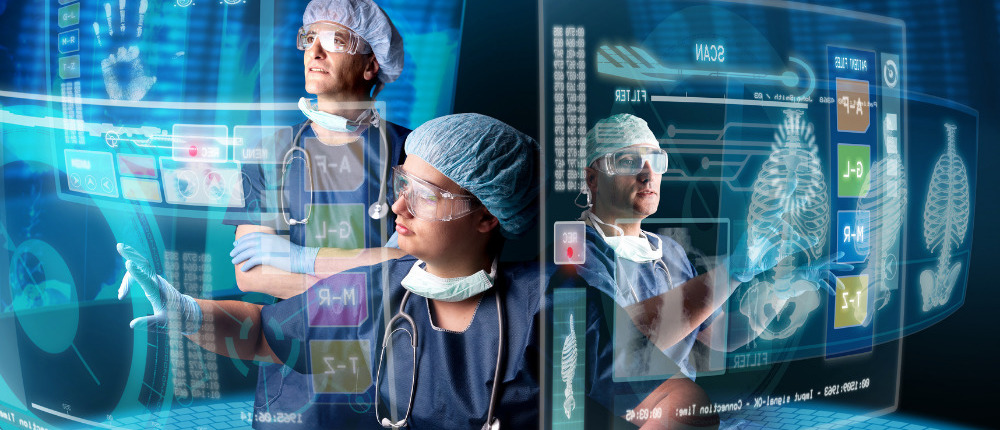
How has artificial intelligence been applied in telemedicine?
Artificial intelligence (AI) has been a great ally for doctors. The data and information-cross between different systems allows doctors to have a 360 view of the patient when enabling interoperability between systems and the issuance of population management reports.
This has been used both by public and private clinics and hospitals and by the public authorities to obtain data that allow differentiated actions to combat diseases and also to act in a predictive way when identifying, for example, more frequent health problems in certain locations.
AI as support for disease detection
AI has also been used to help detect diseases in some types of exams. With an extensive database, artificial intelligence can identify millimeter changes and point to the doctor responsible for the exam report with 90% accuracy where there is evidence of an anomaly.
The artificial intelligence developed by Portal Telemedicine, for example, is capable of detecting millimeter cancerous nodules, difficult to see with the naked eye on imaging exams, as well as other diseases.
During the Covid-19 pandemic, the company developed its algorithms to detect the disease in x-ray exams, which helped to speed up the diagnosis and, consequently, the process of patients distancing to reduce the risk of contagion.
In addition to empowering physicians, this type of technology makes diagnosis more agile, which has helped save lives. An example of this, is the telecardiology solution with conduct guidance developed by Portal Telemedicine which has been applied since 2019.
The algorithms detect anomalies in electrocardiogram examinations and indicate to the cardiologists who issue the report remotely which exams need to be analyzed first in the waiting queue. Therewith, the ECG report for urgent cases is delivered in less than five minutes.
In these cases, the doctor contacts by videoconference the technician or physician who is performing the exam and gives the conduct guidance to be done to stabilize the patient and to refer him to an emergency room.
In Tarumã, a municipality in São Paulo, this solution reduced the number of deaths from heart disease by 45% in one year while reducing the costs of the city hall with heart disease by 30%, after 18 months of implementation.
Telemedicine in Brazil
In Brazil, the service of telemedicine, mainly applied in the issuance of online reports, is growing and consolidating. The beginning was in the 90s – precisely with the expansion of the internet -, following a worldwide trend of both remote medical care and reports issuance.
In recent years, healthcare companies, medical institutions and regulatory bodies have been making an active effort to promote, disseminate and develop more remote healthcare assistance and cooperation programs. Throughout the country, the main public and private universities already have units and centers specifically focused on the study and application of telemedicine. A University network of telemedicine (RUTE for its acronym in Portuguese), the Ministry of Science, Technology and innovation has a hundred units in operation in the country.
We can also already find programs based on Artificial Intelligence in some reference hospitals such as Albert Einstein, in São Paulo, where there are imaging devices capable of pointing out possible diseases and automatically forwarding notifications to the doctor, equipment that sends vital signs of the patient directly to the medical records, among others. The government also invested in the purchase of three supercomputers that are capable of increasing the data storage capacity of the Unified Public Health System (SUS for its acronym in Portuguese) by up to 10 times.
And there are companies like Portal Telemedicine, which operates with remote reports and provides technology for connecting equipment with telemedicine, as well as devices for performing various exams. With a team of renowned doctors, Portal can generate online reports any time of the day and week to the entire country. Moreover, it helps in the qualification and training of many health professionals to conduct exams correctly.
The uses of Telemedicine
Telemedicine can be subdivided into: teleassistance, teleconsultation, tele-education and remote reporting. They all can be considered as eHealth. Let’s explain them:
Teleassistance
In teleassistance, the focus of communication is on the patient and their well-being. Through it, the patient is monitored in their own home or in a local health center by a doctor or any other health professional who communicates with other professionals remotely. To increase the efficiency of the system and ensure an accurate medical investigation, different equipment is used to evaluate clinical parameters and send these data, usually via internet, to remote specialists.
Teleconsultation
Teleconsultation can be done between doctors, when a general practitioner seeks assistance from a specialist, such as a second opinion on the diagnosis, a more indicated medication, or even live guidance on performing a procedure. Another way is online consultation, done directly between doctors and patients. In Brazil, the practice of teleconsultation between doctor and patient was made possible during the Covid-19 pandemic.
Tele-education
Tele-education is already applied in different sectors, but regarding Medicine, the focus is to train the health professionals who are far from the large healthcare centers, seeking to keep them up-to-date and prepared for various situations of medical practice. To achieve this goal, tele-education focused on telemedicine uses videoconferences, classes, lectures, e-learning and recycling programs. It is a way of bringing knowledge to improve the performance of exams and give quality to patient care.
Remote reporting
This is one of the fastest growing sectors in Brazil. Through this technology, exams can be carried out anywhere and issued by specialists connected to the internet. In this way, it is possible to have easy access to the best doctors in the country.
In addition, telemedicine can be used for:
- Consultation and exchange of information between health institutions;
- Imaging and laboratory tests results information;
- Discussion of clinical cases, mainly related to rare diseases;
- Robotic surgery;
- Assistance to chronically ill patients, high-risk pregnant women and the elderly.
The term telehealth, which is also widely used, expands the concept and goes beyond medicine. Telehealth includes the care provided by other professionals in the field, such as nursing technicians, nurses, etc.

How remote reporting works
One of the strengths of the use of telemedicine is the issuing of online reports, without the need for the clinic or hospital to have full-time specialist doctors, attending at their premises. A series of exams, such as Electrocardiogram (ECG), Spirometry, Electroencephalogram, Visual Acuity, Mammography, X-Rays, among others, can be made by the health team (technicians and nurses) and sent in real time to the company of telemedicine.
Through technology, the result is sent via internet to medical teams, composed of specialists working in large medical centers in Brazil. They are professionals qualified to remotely report on exams performed at any time and place in the country. It is possible to deliver reports on the same day or, in case of an emergency, minutes after the issuance of the exam.
Many devices used for procedures are already digital and provide the results directly to telemedicine services. If the devices are analog, some companies, such as Portal Telemedicine, allow rapid integration of the devices with the digital system through the IoT (Internet of things) protocols.
Portal Telemedicine is able to connect to more than 90% of the total medical devices currently installed in Brazil.
The entire process is done in an appropriate and secure information and image management system. If the clinics or hospitals have no equipment to carry out the exams, Portal allows the rental of these devices.
Telemedicine, therefore, is a way to streamline and also qualify the procedure and delivery of reports from various exams. In a short time, the exam is performed and the report is delivered to the patient, making it possible to diagnose and start treatment faster.
Advantages of Telemedicine
There are many advantages to adopting telemedicine. One of them is the possibility of lessen distances. For patients, this technology allows them to have access to quality healthcare and also to top professionals, even being far from urban centers.
For the health system, there is a decentralization of patient care, reducing the demand for specialists and hospitals at the very beginning of the service. With telemedicine, it is possible to bring specialists’ care to more locations and with reduced costs. Funds can be allocated for the prevention and treatment of diseases. In addition, the greater exchange of information between health services contributes to the integration of clinical research, expanding the knowledge of professionals working in the sector.
For doctors and other health professionals, there is the chance to participate in educational programs from anywhere in the country, as well as the possibility of relying on the support of other colleagues in the profession when making decisions.
We can highlight some of the advantages of telemedicine:
- Broadens contact between doctors and patients;
- Access to specialists and top professionals;
- Makes easier the exchange of information between health services;
- Reduces the displacement of patients to hospitals and large urban centers;
- Makes easier the performance of examinations, which can be done in clinics and healthcare units;
- Improves the quality of reports issued and speeds up delivery.
In this way, telemedicine is presented as a way to overcome cultural, socioeconomic and, especially, geographical barriers, so that health services and information reach the entire population. Also because there is a number of specialties that use telemedicine, including those with specificities of occupational health. There is testing and reports delivery in:
- Cardiology – electrocardiogram, Blood Pressure MAP, Holter records;
- Neurology – occupational electroencephalogram; electroencephalogram with brain mapping;
- Pulmonology – spirometry examination, Bronchodilatation test;
- General Radiology – exams such as standard X-rays, mammograms; CT scans; bone densitometry, MRIs;
- Ophthalmology – Visual acuity exams to assess possible vision impairments and the ability to see clearly;
- Dermatology – following a specific protocol and with the use of cameras, photographs of lesions and possible dermatosis of patients are taken.
Support to the traditional medical care
Despite all the advantages, many people are still afraid that telemedicine becomes the norm and that all medical services are provided remotely, without any direct contact with the patient. However, this will not happen. Technology does not come to replace the doctor, but to empower him, giving him greater support and power over data, in addition to helping him overcome the obstacles created by the physical distance between the doctor and the patient.
Thus, we have the Medicine of the future, which is the sum of medical knowledge with the evolution and mastery of the state-of-the-art technologies. It comes with the purpose of predicting the outbreak of diseases, detecting a health problem early or avoiding serious sequelae. It also focuses on innovation in minimally invasive procedures.
With the evolution of scientific knowledge and the improvement of technological resources in the medicine of the future, it will be increasingly possible to develop treatments with more accuracy, effectiveness and safety.
